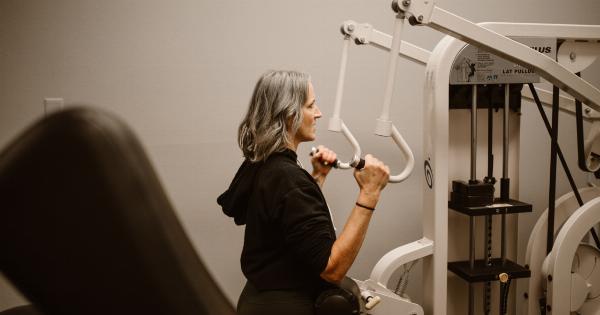High-intensity intermittent training (HIIT) has gained significant popularity in recent years due to its effectiveness in achieving fitness goals in a shorter period of time.
HIIT workouts involve brief bursts of intense exercise followed by periods of rest or lower-intensity activity. While many people have experienced positive results with this type of training, it is important to understand that there are also potential dangers associated with HIIT.
In this article, we will explore some of these risks and provide insights on how to minimize them.
1. Increased Risk of Injury
One of the primary dangers of HIIT is the increased risk of injury. The high-intensity nature of this training method puts a significant amount of stress on the body, including joints, muscles, tendons, and ligaments.
Over time, this repetitive strain can lead to overuse injuries such as sprains, strains, tendinopathies, or even stress fractures.
To mitigate this risk, it is crucial to ensure proper form and technique during exercises. Additionally, it is important to gradually increase the intensity and duration of HIIT workouts, allowing the body to adapt and minimize the chance of injury.
2. Strain on Cardiovascular System
HIIT places a tremendous demand on the cardiovascular system. During intense exercise intervals, heart rate and blood pressure significantly increase.
While this can provide cardiovascular benefits, individuals with pre-existing heart conditions or those who are not accustomed to intense physical activity may be at a higher risk of experiencing cardiovascular issues such as heart palpitations, chest pain, or even heart attacks.
Prior to engaging in HIIT, it is advisable for individuals with cardiovascular conditions to consult with their healthcare provider to ensure it is safe for them.
It is equally important for everyone, regardless of their health status, to gradually progress their HIIT workouts under professional guidance.
3. Overtraining and Burnout
HIIT workouts are designed to push the limits of your physical performance. However, this can also lead to overtraining and burnout if not managed properly.
Over time, constantly subjecting the body to intense exercise without sufficient rest and recovery can result in decreased performance, chronic fatigue, compromised immune function, hormonal imbalances, and even mental health issues such as mood swings or depression.
It is crucial to allow adequate rest and recovery between HIIT sessions. This includes getting enough sleep, incorporating active recovery days, and listening to your body’s signals of fatigue and overexertion.
Balancing HIIT workouts with other forms of lower-intensity exercises, such as yoga or Pilates, can also help prevent overtraining and burnout.
4. Impact on Joint Health
The high-impact nature of HIIT exercises, such as jumping or sprinting, can put excessive stress on the joints. This may lead to joint pain, inflammation, or even chronic conditions like osteoarthritis.
Individuals with existing joint issues or those who are overweight are particularly susceptible to these risks.
To protect joint health, it is essential to incorporate proper warm-up and cooldown routines into HIIT workouts. This allows the joints to gradually adjust to the intensity of exercise.
Engaging in exercises that are less impactful on the joints, such as swimming or cycling, can also help reduce the risk of joint-related problems.
5. Mental and Emotional Stress
While HIIT is known for its physical intensity, it can also contribute to mental and emotional stress. Constantly pushing yourself to the limit, striving for faster times or more repetitions, can create a sense of pressure and anxiety.
This pressure to perform can take away the enjoyment of exercise and lead to a negative relationship with fitness.
It is crucial to approach HIIT workouts with a balanced mindset. Set realistic goals, focus on progress rather than perfection, and understand the importance of rest and self-care.
Incorporating mindfulness techniques, such as meditation or deep breathing, can also help manage the mental and emotional stress associated with HIIT.
6. Inadequate Recovery
HIIT workouts require sufficient recovery time to allow the body to repair and adapt. Neglecting proper recovery can hinder progress and increase the risk of injury.
Unfortunately, many people fail to prioritize recovery, leading to suboptimal results and potential setbacks.
Allowing at least 48 hours of rest between intense HIIT sessions is recommended. Sleep, adequate hydration, and a balanced diet play critical roles in the recovery process as well.
Incorporating recovery strategies such as foam rolling, stretching, and gentle mobility exercises can further enhance the body’s ability to recover effectively.
7. Lack of Individualization
HIIT workouts are often designed for a general population, but individual variations exist in terms of exercise tolerance, fitness level, and health status.
Many individuals may be unable to tolerate the high-intensity demands of HIIT due to musculoskeletal limitations, respiratory conditions, or other underlying health issues.
It is vital to listen to your body and adjust the intensity of HIIT workouts according to your individual capabilities.
Gradually progress and modify exercises to suit your needs, and consult with a qualified fitness professional if you have any concerns or specific health considerations.
8. Potential Impact on Hormonal Balance
Intense exercise, such as HIIT, can disrupt the delicate balance of hormones in the body. Prolonged periods of HIIT without sufficient recovery may lead to hormonal imbalances, particularly in women.
These imbalances can manifest as irregular menstrual cycles, reduced fertility, or even changes in bone density.
For women, it is crucial to pay close attention to any changes in menstrual patterns or other hormonal symptoms.
If you notice such changes, it is recommended to consult with a healthcare provider or a registered dietitian with experience in sports nutrition to help ensure hormone levels are adequately supported.
9. Unsustainability
Consistency is key to achieving and maintaining fitness goals. However, HIIT workouts can be extremely demanding, both physically and mentally. Many individuals find it challenging to sustain a high level of intensity and frequency over the long term.
It is important to find a sustainable exercise routine that balances intensity, duration, and enjoyment.
Adding variety to your workouts, such as incorporating strength training or low-impact activities, can help prevent burnout and make exercise more sustainable in the long run.
10. Lack of Progression
If not properly structured, HIIT workouts can plateau your progress. Over time, your body may adapt to the same high-intensity exercises, leading to diminished results.
It is crucial to continuously challenge your body with varying exercises, intensities, and interval lengths to avoid hitting a plateau.
Periodizing your HIIT workouts by incorporating different phases, such as strength-focused or endurance-focused intervals, can help ensure continuous progress and prevent stagnation.
Seeking guidance from a qualified fitness professional can also aid in designing a well-structured program for optimal results.






























